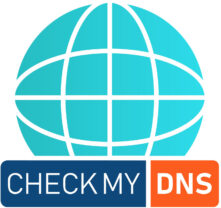How DNS works? DNS is essentially an address book of the internet. It translates user-friendly domain names into machine-readable IP addresses to allow computers to communicate with each other. www.example.com is equivalent to a numerical IP address such as 192.0.2.1. If we did not have DNS, we would have to memorize the complex number for each web site visited.
The DNS process has far more steps and multiple DNS servers that must work together to resolve a domain name into an IP address. This is a process overview.
Step-by-Step DNS Resolution Process
- The DNS Query: This is where it all begins. You type a web address into your browser, and your browser doesn’t know the IP address of the website. Therefore, it sends out a DNS query. This is actually a request to find the IP address associated with the domain name you entered.
- Caching Locally: This is when your device first checks its local DNS cache to see if it recently visited the website and can still remember the IP address before sending the query on to the wider internet. If the information is cached, then the DNS lookup stops there, and the website loads. If not, then the query moves on.
- DNS Resolver: In case the information is not available locally, it sends a DNS query to a DNS resolver. Most of the times, your ISP would be providing this facility. A resolver will take care of the rest of the query on your behalf by finding the right IP for you.
- Root Server Contact: The DNS resolver first contacts one of the 13 root DNS servers spread all over the globe. These servers do not have the IP address but can point the resolver to the right top-level domain server, for example, handling.com,.net, or.org domains.
- TLD Servers: This request is then passed to the correct TLD server which maintains domains ending with this extension, and it also knows where the DNS server managing the example.com domain exists.
- Authoritative DNS Server: Then, the TLD server passes the query to the authoritative DNS server managing that specific domain. The authoritative DNS server holds the actual IP address of the website that gets passed back to the DNS resolver.
- Obtaining the IP Address: Having obtained the IP address by the resolver, it is transferred back to your browser for connection and subsequent loading of the website’s page to your computer
DNS Caching for Better Web Surfing
To make the internet very efficient, DNS uses caching; it stores the translations in memory temporarily. Your computer and the DNS resolver both will have a cache of this translation so that the later requests can be resolved pretty fast over the same domain. The time to open web sites that are visited by you frequently is very short.
DNS and Site Performance
One of the determining factors of website-loading time is the DNS resolving process. The timeconsuming processes that a DNS resolver consumes in finding an IP will thus delay the general surfing time. Thus, there is considerable incentive in fast DNS services to boost websites. Some spend resources in buying fast content delivery networks (CDNs).
Some DNS services are optimized for a particular role. For instance, one might use the public DNS service from Google or from Cloud flare that is enhanced both in speed and in security compared to the traditional DNS servers most ISPs operate.
DNS Security Considerations
While DNS is very important for the internet, it has also been one of the most common attack points by hackers. DNS spoofing or cache poisoning is a type of attack where hackers manipulate DNS information in a way that causes traffic to be redirected towards malicious websites. Such threats can leak some sensitive data and create significant risks in terms of security.
For protection against attacks on DNS data, the security extensions known as DNSSEC were invented. DNSSEC adds another layer of authentication to guarantee that the intended websites are accessed instead of malicious impersonators.
Perhaps one of the most critical, but almost invisible parts of the web is the DNS system. Every time you surf on the web, DNS quietly works behind the scenes in resolving domain names to IPs so that you end up at your destination as safely and as fast as possible. Knowing how DNS works therefore gives a sense of just how intricate and efficient the web can be, and how much, behind the scenes, keeps everything smooth for us to operate online.
